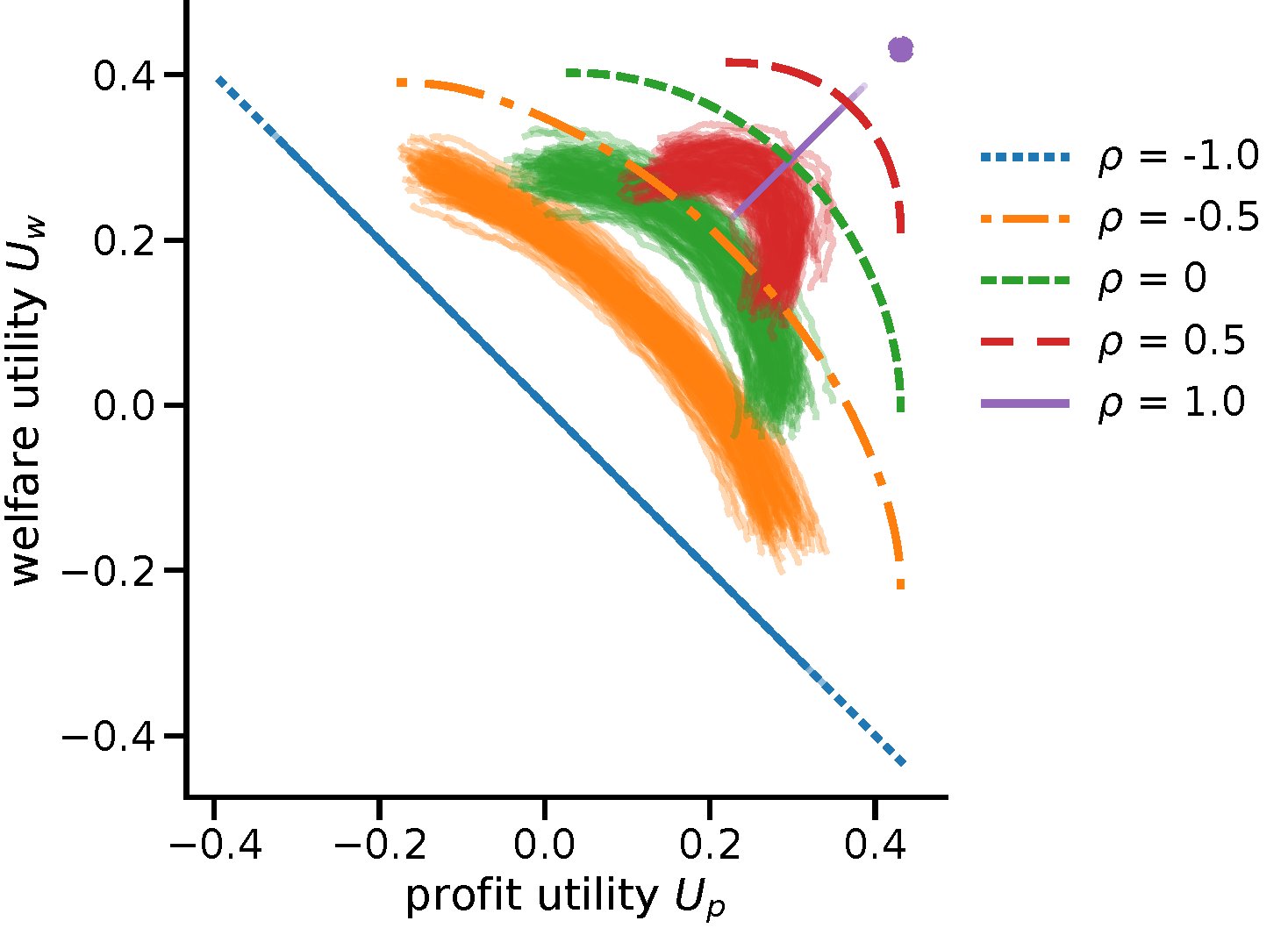CAREER: Welfare-Centric Machine Learning
This material is based upon work supported by the National Science Foundation under Grant IIS - 1942702 (Faculty Early Career Development Program). Any opinions, findings, and conclusions or recommendations expressed in this material are those of the authors and do not necessarily reflect the views of the National Science Foundation.
Project Description
Many decisions that once were made by humans are now made using algorithms. These algorithms are typically designed with a single, profit-related objective in mind: Loan approval algorithms are designed to maximize profit, smart phone apps are optimized for engagement, and news feeds are optimized for clicks. However, these decisions have side effects: irresponsible payday loans, addictive apps, and fake news can harm individuals and society.
This project will develop and test a new paradigm for prioritizing the social impact of an algorithmic decision from the start, rather than as an afterthought. The key insight is to leverage recent advances in machine learning -- which make it possible to predict who will benefit from a decision and how -- to design algorithms that balance those predicted benefits alongside traditional profit-related objectives. The research goals of the award are complemented by an educational plan to develop new curricula at the intersection of welfare economics and fair machine learning. The award will also support a series of workshops to educate policymakers and practitioners on how to use machine learning in a way that prioritizes the well-being of society.
The technical aims of the project have three main thrusts. The first is to develop a theory of welfare-centric machine learning: a formal, quantitative framework for weighing the social welfare effects of an algorithm alongside traditional, private optimization criteria. This involves first defining a notion of social welfare, based on principles of welfare economics, and characterizing how welfare can be impacted by a decision algorithm. It then integrates recent advances in multi-objective machine learning to formally balance social welfare maximization with traditional loss minimization. The second thrust is to improve empirical methods for measuring social welfare from 'digital trace' data. Scalable methods for estimating welfare and welfare impacts are required if we want algorithms to maximize those impacts. The final thrust highlights the broad relevance of this framework by applying it to real-world data from three different decision-making contexts: (i) In consumer credit, it will show how welfare-sensitive credit scores can balance the need for profit maximization with the desire to make socially-responsible lending decisions. (ii) In content recommendation, it will demonstrate how content providers can jointly optimize for quality and engagement, and provide regulators with tools for estimating the 'social cost per click.' (iii) In the design of humanitarian aid programs, it will illustrate how welfare-centric algorithms can enable policymakers to effectively and transparently balance multiple social objectives.
Research papers
